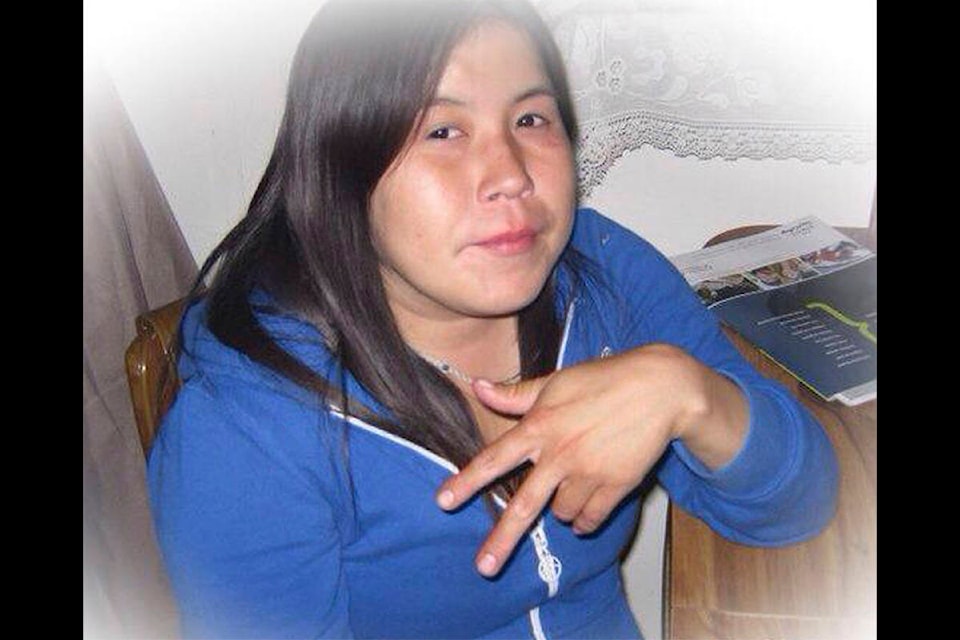Nurses called on to testify this week at the inquest into the death of Cynthia Blackjack denied First Nations patients face racism at the Carmacks health centre.
Terry Ogilvie, who is now retired, commended nurses in the Yukon. She called them “amazing.”
“It’s what kept me coming back, the level of competence and caring and providing services to people of the Yukon, regardless of race, creed or colour,” she said on Jan. 22, when the inquest moved to Kwanlin Dün Cultural Centre.
Ogilvie and Deb Crosby were at the health centre on Nov. 7, 2013, the day Blackjack died. The 29-year-old died minutes before touching down in Whitehorse via medevac. She had contacted the Carmacks health centre in the days leading up to her death complaining of dental pain. She went to the centre in person the day before she died, where she was tentatively diagnosed with alcohol-induced gastritis.
The linchpin of the inquest is whether Blackjack’s health needs somehow fell through the cracks, delaying her arrival at the Whitehorse hospital and contributing to her death.
Suggestions of racism at the centre swirled earlier this week.
Friends and family said the health centre in town turns people away, writing it off as a place they don’t always expect to receive care. Some said Blackjack felt similarly.
Bill Johnie, Blackjack’s brother-in-law, said on Jan. 23 that Blackjack was reluctant to go the health centre before she died because she was afraid staff would threaten her with arrest.
“She said the nurse told her if she comes across there too much they said they’re gonna phone the police on her,” he said. “She say (sic) she didn’t trust to go there. She wanted to go to a hospital.”
Rachel Byers, director of health at Little Salmon/Carmacks, said earlier this week that some citizens avoid the centre because they fear they won’t be taken seriously.
“They don’t want to be treated like that, as a (second-class) citizen,” she said.
Nurses called on to testify said Blackjack received the best care they could provide.
Ogilvie recounted what the mood was like after news of Blackjack’s death travelled down the chain of communication.
“We sat there in that room and cried after the call was done,” she said, noting a phone a call with an RCMP officer.
“It was terribly traumatic to lose a patient and to be debriefing with such an agitated, authoritarian person. It was just a very sad end to the day when we had worked so very hard.”
Crosby, who was the nurse-in-charge at the centre around the time of Blackjack’s death, said she had a “good rapport” with her.
Susan Roothman, legal counsel for the First Nation, asked whether she understood intergenerational trauma and its link to addiction problems. Crosby said yes.
“I can very clearly say that I, personally, have no bias,” she said. “I don’t make assumptions. I see what I see. My job as a nurse is to be unbiased with every single patient that I see. And certainly I can tell you that every single patient that I saw got the best care that I could provide.”
There were transportation problems the day Blackjack died, a long search for a ride to Whitehorse so that she could get to the hospital, which is what she wanted, according to Johnie.
Blackjack was at Johnie’s house the night of Nov. 4. He said she was sick then, puking, adding that Blackjack hadn’t been drinking.
According to a timeline showing the medical care Blackjack received leading up to her death, she phoned the centre on Nov. 4 and 5 complaining of a toothache.
Johnie said she had problems with her teeth for years.
The next day, on Nov. 6, Johnie said he drove her to the health centre. She had been complaining about abdominal pain then.
Johnie said he would have driven Blackjack to the hospital in Whitehorse if not for car troubles. He said a nurse told him that an ambulance wasn’t available before Nov. 7.
The First Nation has a community van that can be used for transporting citizens to Whitehorse for treatment. Johnie said a nurse informed him that it wasn’t available, either (this information hasn’t been corroborated).
Johnie said he didn’t hear from Blackjack during this time, presuming she had made it to Whitehorse and was being treated.
He said things have changed at the First Nation since her death.
“After this all happened, now they’re taking people into Whitehorse now with the van for medical,” Johnie said.
Ogilvie spoke to some of the challenges Carmacks has with ambulance crews.
“There were times where the nurse would need to dispatch … but the team that was on that night or weekend would be out of cell range and it would take a very long time to get an ambulance and it might involve five or six phone calls to find someone who knows someone who might know where they are to go get them to take the call,” she said, adding that there were ongoing recruitment and training challenges.
“Having people willing to be on-call, especially on nights and weekends, was very, very difficult and caused us at the health centre a great deal of angst.”
The inquest will continue to hear from witnesses until Jan. 29.
Contact Julien Gignac at julien.gignac@yukon-news.com
